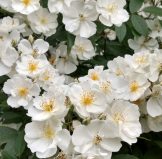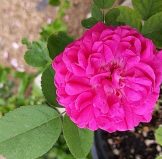For most people, harvest time brings to mind a cornucopia of veggies and fruits. For me, the end of this 2009 growing season has been a fruition of over 20 years of cultivating a xeriscape where most of the trees and shrubs have been watered 5 times a year or less. These self-imposed watering restrictions have demonstrated which plants can survive and thrive under serious water shortages. I have done this both to encourage water conservation in Colorado and to demonstrate that a dry western landscape can be beautiful.
The reason why 2009 feels like a harvest year is because many of my woody plants are now mature and because with all the rain we’ve been getting, my xeriscape has never looked better at the end of summer.[Read More]

 NEW for 2019!
NEW for 2019!







 We are having a real revolution in our relationship with our soils. The turning point is our change in focus from soil fertility to soil health. In the last 60 years of the “Green Revolution” (i.e. the petrochemical boom), soil was viewed as a physical structure and fertility was viewed as a measure of chemicals in the soil — primarily NPK, nitrogen, phosphorus and potassium. The petroleum industry could make these macronutrients from natural gas, which make plants grow but often in poor health. Weak plants attract insect pests and fungal diseases, so more petroleum in the forms of insecticides and fungicides added to the success of the oil industry. But this approach has led to “Peak Soil” where land is losing productivity, crops are losing nutritional value, the soil is eroding at extreme rates, and the health of animals and people has declined.
We are having a real revolution in our relationship with our soils. The turning point is our change in focus from soil fertility to soil health. In the last 60 years of the “Green Revolution” (i.e. the petrochemical boom), soil was viewed as a physical structure and fertility was viewed as a measure of chemicals in the soil — primarily NPK, nitrogen, phosphorus and potassium. The petroleum industry could make these macronutrients from natural gas, which make plants grow but often in poor health. Weak plants attract insect pests and fungal diseases, so more petroleum in the forms of insecticides and fungicides added to the success of the oil industry. But this approach has led to “Peak Soil” where land is losing productivity, crops are losing nutritional value, the soil is eroding at extreme rates, and the health of animals and people has declined.